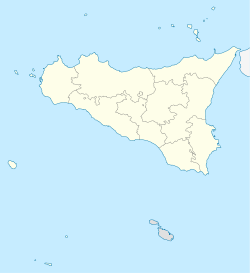| Royal Palace of Ficuzza | |
|---|---|
Real Casina di Caccia di Ficuzza | |
 Royal Palace of Ficuzza façade | |
| Alternative names | Reggia di Ficuzza |
| General information | |
| Status | now used as a museum |
| Type | Palace |
| Architectural style | Neo-Classical |
| Location | Ficuzza (Corleone, Italy) |
| Coordinates | 37°52′55″N13°22′40″E / 37.8819°N 13.3777°E |
| Construction started | 1802 |
| Completed | 1807 |
| Client | Ferdinand IV of Naples and III of Sicily |
| Technical details | |
| Floor count | 3 |
| Design and construction | |
| Architects | Carlo Chenchi, Giuseppe Venanzio Marvuglia |
Error: Invalid designation | |
| Official name | Real Casina di Caccia di Ficuzza |
| Type | Non-movable |
| Criteria | Monument |
| State Party | Italy |
The Royal Palace of Ficuzza, also named Reggia or Real Casina di Caccia (hunting lodge) of Ficuzza is located near the town of Corleone, located some 45 kilometers from Palermo, Sicily. It was commissioned by Ferdinand IV of Naples and III of Sicily during his exile in Sicily starting after the establishment of the Parthenopean Republic in 1798. [1]
